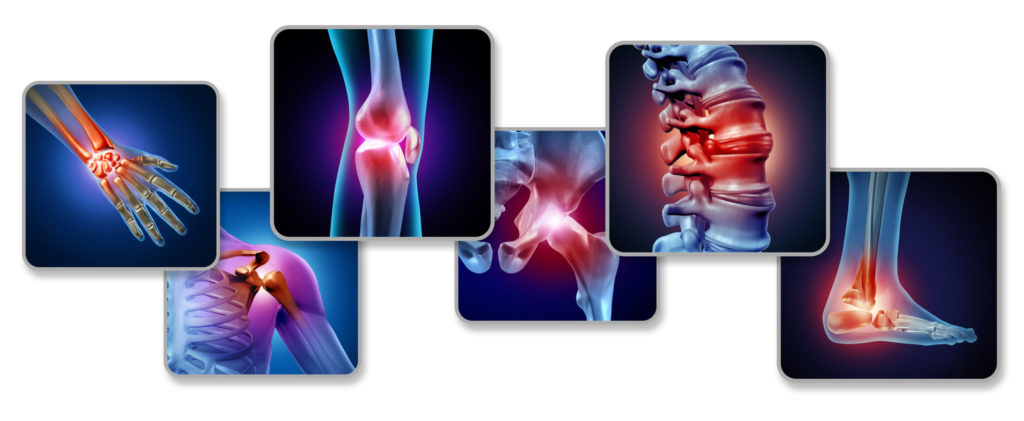
Are you part of the 38% of the world’s population that is affected by chronic pain? If so, you know firsthand how it can reduce your quality of life, and take a detrimental toll on your physical and emotional health. If you’re at the point of feeling like you’ve tried everything, read on to learn about a compound that may be the pain-reliving answer you’ve been searching for. But first, let’s take a look at how chronic pain develops in the first place.
When tissues become injured or damaged, which occurs in fibromyalgia, arthritis, neuropathy, musculoskeletal disorders (and many more conditions), there are a multitude of systems, cells and chemical messengers that coordinate to create inflammation and the sensation of pain at the site of injury. In the ideal scenario, once the tissue is repaired, an orchestra of cells and compounds also work to slow and eventually turn off these responses, returning the body to normal. Unfortunately, when the body cannot resolve this tissue damage, turn off this inflammatory response, or reduce the amount of pain signals produced, chronic pain develops.

The Power of PEA
The powerful compound that works to reduce inflammation and pain, which I hinted at above, is called palmitoylethanolamide, or, PEA. Have you heard of it before?
If not, PEA is a natural, fat-soluble molecule produced by humans, animals and plants, and can be found in foods such as meat, eggs, soy and peanuts. It is produced on demand when pain or inflammation are created within your body, acting to reduce their levels and helps to bring your body back into balance (homeostasis).
PEA is a natural, fat-soluble molecule produced by humans, animals and plants, and can be found in foods such as meat, eggs, soy and peanuts.
It does this by supporting a system you also may not have heard of before, called the endocannabinoid system (ECS). The ECS is made up of compounds and receptors that predominantly work on your brain, spine and immune system, communicating with them to reduce the sensation of pain and the production of inflammatory cells.

Specifically, PEA works to stimulate or increase the activity of the ECS, spurring it on when there is this pain to relieve or inflammation to dampen. However, if the pain or inflammation becomes chronic, PEA levels can become depleted, restricting the benefits it can provide.
For this reason, people with chronic pain may choose to supplement with PEA, to make up for what their body is struggling to produce. Being that PEA can already be made by your body, it is considered very safe to take, and has been shown in numerous clinical trials to assist a broad variety of pain-related conditions at several different doses.
What the Research Says
PEA has demonstrated its pain-relieving effects in the following conditions:
- Fibromyalgia (FM): 35 patients with FM, already taking pain medications, took 600 mg/d of PEA for 12 weeks. Results showed PEA reduced their overall pain. The average number of painful body points also decreased from eight to one.
- Osteoarthritis (OA): 111 people with mild or moderate knee OA received 600 mg/d of PEA for 8 weeks, and at the end of the trial, their knee pain and stiffness reduced by 53.7%, compared to 25% in the placebo group.
- Diabetic neuropathy: A 600 mg/d dose of PEA across 8 weeks reduced the intensity and presence of pain, pins and needles, burning and numbness in 30 people with diabetic neuropathy.
- Carpal tunnel syndrome (CTS): 50 patients took 1,200 mg/d of PEA for 8 weeks, experiencing a decrease in the pain intensity of their CTS, compared to people who didn’t take PEA, whose pain actually increased.
- Sciatica: 636 sciatica participants who were prescribed 600 mg/d of PEA for 21 days reported their pain reduced and quality of life improved.
A 600 mg/d dose of PEA across 8 weeks reduced the intensity and presence of pain, pins and needles, burning and numbness in 30 people with diabetic neuropathy.
PEA: The Missing Puzzle Piece?
If you’re suffering from chronic pain, PEA could be the missing puzzle piece in your pain management plan.
Whilst PEA does not carry with it many interactions with medications, I always recommend discussing your unique case with a healthcare Practitioner, to ensure PEA is appropriate for you. Further, as PEA is fat soluble, it’s also important you’re prescribed a type of supplemental PEA that enables it to become more water soluble, so your digestive system (which is also water-soluble), can absorb it properly.
Having seen PEA’s wonderful benefits in patients with conditions such as those we’ve been through above, I’d suggest to give it a go to see the pain relief you could experience too!
Leave a Reply